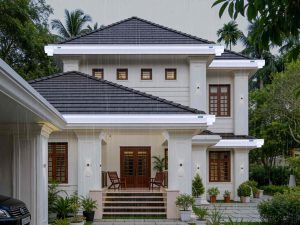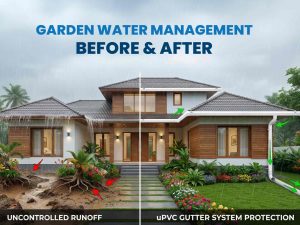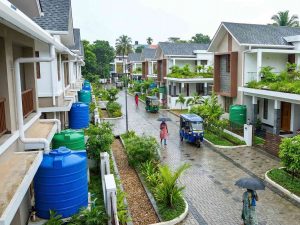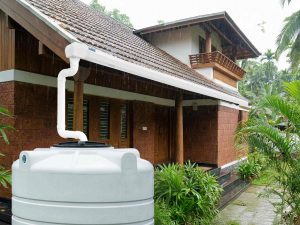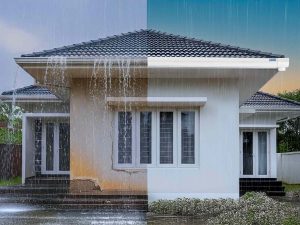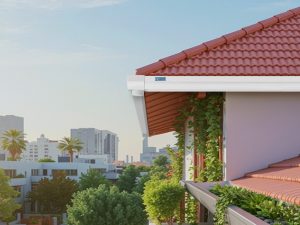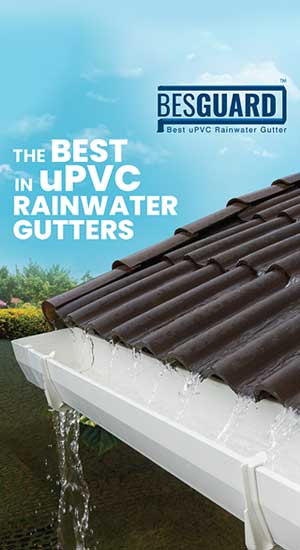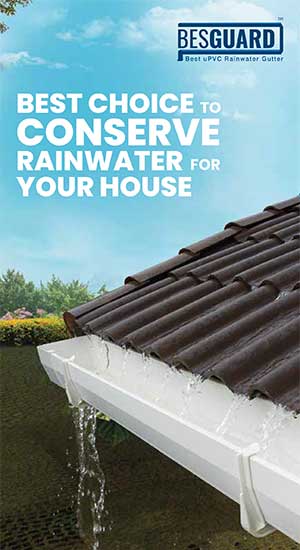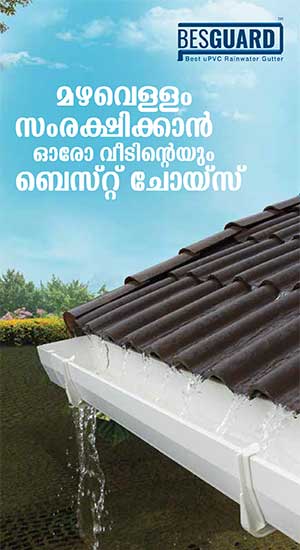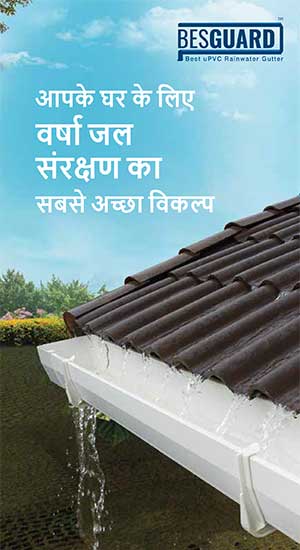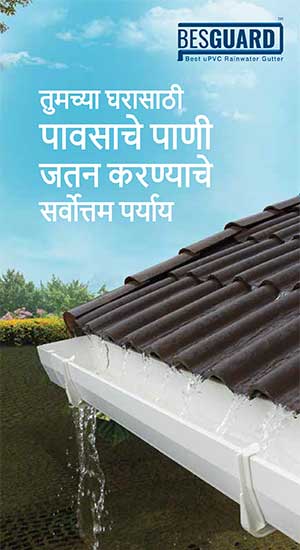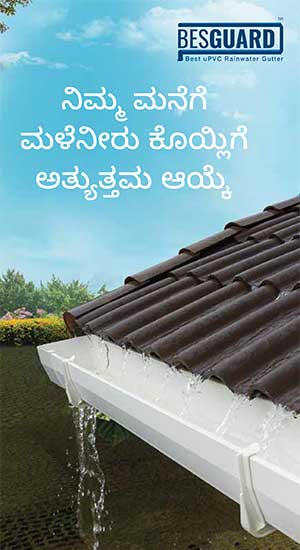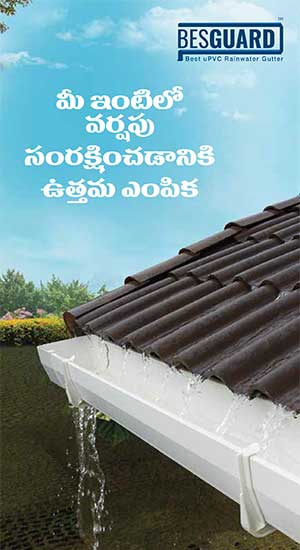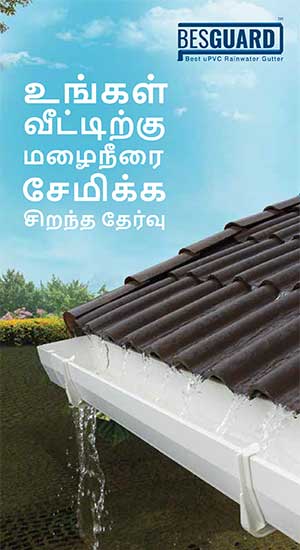Adapting to Extreme Weather: Gutter Solutions for High-Rainfall and Cyclone-Prone Zones
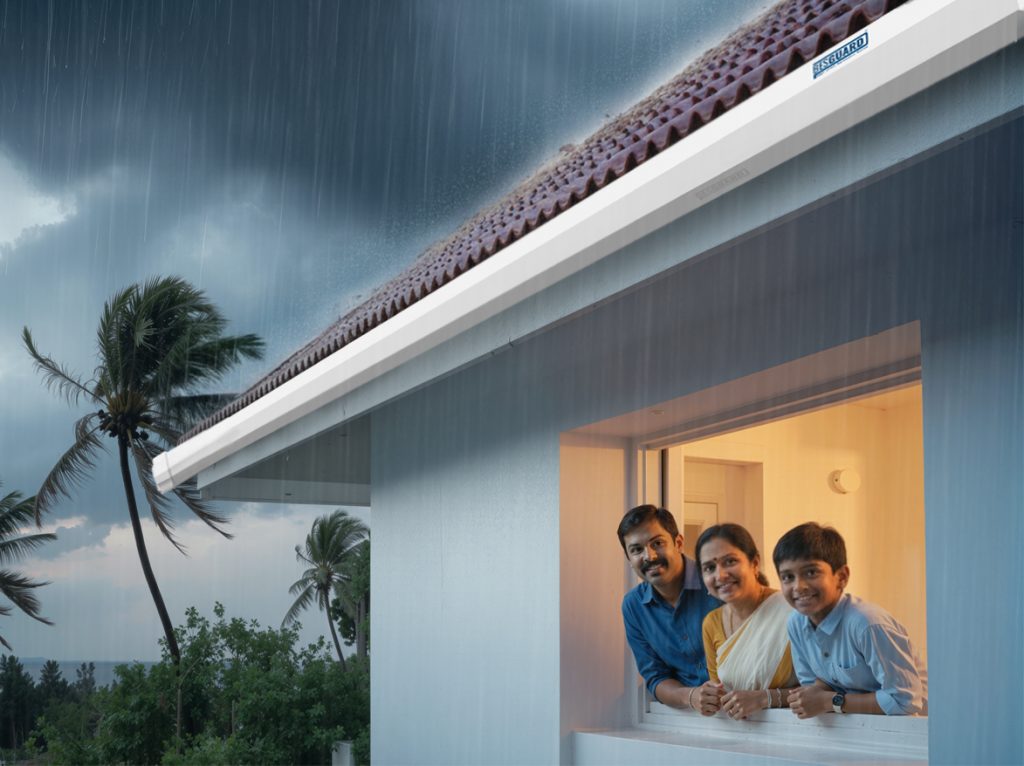
Kerala stands at the intersection of breathtaking natural beauty and formidable weather challenges. With annual rainfall exceeding 3000mm, intense monsoon downpours, and increasing cyclone frequency along the Arabian Sea coast, homes across God’s Own Country face water management demands unlike anywhere else in India.
As climate patterns intensify these extreme weather events, the rainwater gutter system you choose becomes critical infrastructure rather than a simple accessory.
Understanding Kerala’s Extreme Weather Reality
The numbers tell a sobering story. Kerala experiences rainfall intensities that can exceed 2mm per minute during peak monsoon storms – conditions that overwhelm conventional drainage systems designed for moderate climates.
Coastal regions face the additional burden of salt-laden winds and cyclonic conditions that accelerate material deterioration. When Cyclone Ockhi struck in 2017 and subsequent weather events battered Kerala’s coast, thousands of homes discovered their drainage systems couldn’t withstand the combination of sustained heavy rainfall and extreme wind forces.
Traditional gutter materials crumble under these conditions. Galvanized iron and steel gutters, despite initial strength, succumb rapidly to rust when exposed to Kerala’s humidity and coastal salt spray. Cast iron systems, while historically popular, develop corrosion that weakens structural integrity precisely when homes need maximum protection.
The result: collapsed gutters, overflow damage, foundation erosion, and costly emergency repairs during the worst possible weather.
Engineering for Extreme Conditions
Properly sizing gutters for high-rainfall zones requires sophisticated calculation rather than guesswork.
Standard 5-inch residential gutters handle approximately 5,520 square feet of roof drainage under normal conditions – but Kerala’s rainfall intensity demands different calculations.
For regions experiencing extreme downpours, 6-inch systems offering 7,960 square feet capacity become essential, while exceptionally large or complex roofs may require custom sizing based on actual rainfall data and roof pitch factors.
Besguard’s engineering addresses these extreme requirements through multiple design advantages:
- The 165mm (6-inch) gutter system delivers 16 liters per meter flow capacity.
- The 225mm (8-inch) option handles 20 liters per meter – specifications engineered specifically for Kerala’s intense monsoon conditions.
This isn’t theoretical capacity but tested performance that maintains efficient drainage even during the heaviest downpours.
The proprietary IR-Rib Design (Internally Reinforced Rib) provides structural resilience that conventional gutters cannot match.
This internal reinforcement prevents the sagging and deformation that occurs when gutters hold substantial water volumes during sustained rainfall, ensuring your drainage system maintains proper slope and function regardless of weather intensity.
Material Science Meets Coastal Challenges
uPVC technology represents the fundamental solution to Kerala’s corrosive coastal environment.
Unlike metal alternatives that rust within years of installation, uPVC remains completely immune to corrosion from salt-laden air, humidity, and chemical exposure. This corrosion resistance isn’t surface treatment that wears away – it’s inherent to the material composition, providing decades of reliable performance in conditions that destroy traditional gutters.
UV stabilization integrated into Besguard’s uPVC formulation prevents the brittleness and degradation that intense tropical sunlight causes in inferior plastics.
Kerala’s weather alternates between scorching heat and torrential rain, creating thermal stress that cracks lesser materials. Besguard’s UV-stabilized composition maintains flexibility and strength through these temperature extremes, ensuring your gutters don’t become brittle during dry periods and fail when monsoons arrive.
The trapezoidal canal design accelerates water flow compared to traditional rectangular or semicircular profiles.
During intense rainfall events, this enhanced flow velocity prevents water backup that causes overflow, directing maximum volume efficiently to downspouts and away from your home’s foundation.
When rainfall exceeds 1.5–2mm per minute – common during Kerala’s peak monsoon – this flow optimization becomes the difference between protection and damage.
Storm-Ready Installation and Configuration
Proper downspout configuration proves equally critical in extreme weather zones.
Engineering standards specify that each downspout handles approximately 600–800 square feet of roof area under normal conditions, but high-rainfall regions require reduced capacity ratios to prevent system overwhelm.
Besguard’s systems incorporate strategically positioned 75mm and 110mm outlets that match gutter capacity to downspout discharge, ensuring balanced water evacuation even during storm surges.
The lightweight nature of uPVC – significantly lighter than metal alternatives—reduces structural load on roof edges and fascia boards.
This weight advantage becomes crucial during cyclonic winds, when heavy metal gutters can tear away from mountings, creating dangerous projectiles and leaving homes unprotected precisely when drainage matters most.
Besguard’s installation protocols account for Kerala’s wind loads, ensuring secure mounting that withstands cyclone-force gusts.
Maintenance That Survives Monsoon Season
Extreme weather zones demand not just initial performance but sustained reliability throughout decades of harsh conditions.
Metal gutters require repainting, rust treatment, and progressive replacement as corrosion advances. These maintenance windows often coincide with monsoon preparation – the worst possible timing for gutter work.
Besguard’s uPVC systems eliminate weather-dependent maintenance cycles.
The smooth, non-porous interior surface prevents debris accumulation and facilitates simple cleaning between monsoon seasons.
When storms arrive, your gutters are ready – no last-minute rust repairs, no emergency sealing of leaks, no anxiety about whether deteriorated systems will survive another intense rainfall season.
Climate-Adapted Protection
Climate change continues to intensify Kerala’s weather extremes. The India Meteorological Department (IMD) documents increasing rainfall intensity, more frequent cyclonic disturbances, and unpredictable storm patterns that challenge conventional infrastructure.
Tomorrow’s extreme weather will test today’s installation choices, making it essential to select systems engineered for intensification rather than historical averages.
Besguard’s design philosophy centers on Kerala’s actual conditions – not generic specifications adapted from moderate climates.
Every dimension, material choice, and engineering feature reflects the reality of 3000mm+ annual rainfall, coastal salt exposure, cyclonic wind forces, and thermal extremes.
This isn’t universal drainage infrastructure modified for tropical conditions – it’s purpose-built protection for God’s Own Country’s unique challenges.
For homes and businesses in Kerala’s high-rainfall and cyclone-prone zones, your gutter system represents critical defense against nature’s most powerful forces.
When the next intense monsoon arrives or cyclonic winds sweep inland from the Arabian Sea, Besguard’s engineered uPVC systems stand ready – channeling thousands of liters safely away from your structure while conventional materials fail under identical conditions.
Conclusion
Climate extremes don’t compromise with inadequate infrastructure. Neither should you.



